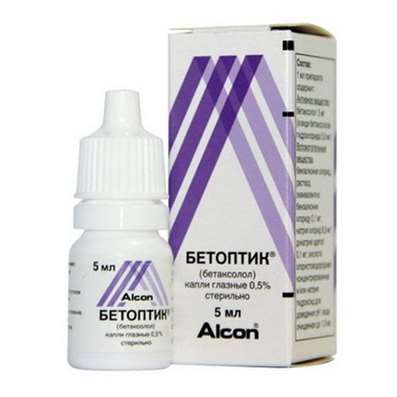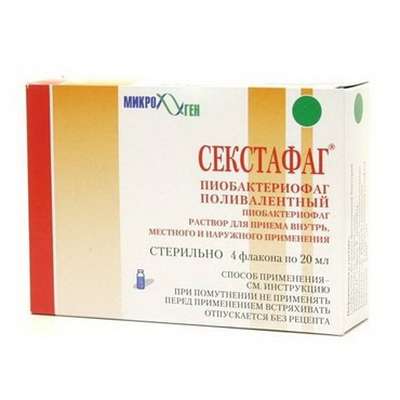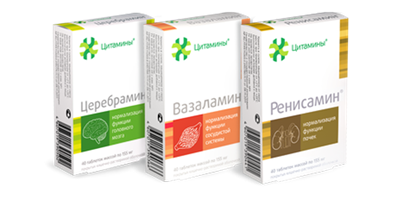Instruction for use: Spitomin
I want this, give me price
Dosage form: tablets
Active substance: Buspirone*
ATX
N05BE01 Buspirone
Pharmacological groups:
Anxiolytic agent (tranquilizer) [Serotonergic drugs]
Dopaminomimetics
Anxiolytic agent (tranquilizer) [Anxiolytics]
The nosological classification (ICD-10)
F10.3 Abstinence: Alcohol withdrawal syndrome; Abstinence syndrome; Abstinence syndrome with alcoholism; Abstinence; Alcohol abstinence; Alcohol abstinence; Alcohol withdrawal status; Alcohol withdrawal syndrome; Postabstinctive disorder; Post-abstinence condition; Hangover syndrome; Abstinence syndrome; Alcohol abstinence syndrome; Alcohol withdrawal syndrome; Abstinence condition
F32 Depressive episode: Adynamic subdepression; Astheno-adynamic subdepressive states; Asthenodepressive disorder; Astheno-depressive disorder; Asthenodepressive state; Astheno-depressive state; Major Depressive Disorder; Vyaloapatichesky depression with retardation; Double depression; Depressive pseudodement; Depressive illness; Depressive mood disorder; Depressive disorder; Depressive mood disorder; Depressive state; Depressive disorders; Depressive syndrome; Depressive syndrome larviated; Depressive syndrome with psychoses; Depressed masks; Depression; Depression Depletion; Depression with the phenomena of inhibition within the framework of cyclothymia; Depression is smiling; Involutional depression; Involutionary melancholy; Involutional depression; Manic-depressive disorder; Masked Depression; Melancholic Attack; Neurotic depression; Neurotic depression; Shallow Depression; Organic depression; Organic depressive syndrome; Simple depression; Simple melancholic syndrome; Psychogenic depression; Reactive depression; Reactive depression with moderate psychopathological symptoms; Reactive depressive states; Reactive depression; Recurrent depression; Seasonal depressive syndrome; Severostatic depression; Senile Depression; Senile Depression; Symptomatic Depression; Somatogenic depression; Cyclotymic depression; Exogenous Depression; Endogenous depression; Endogenous Depressive Conditions; Endogenous Depression; Endogenous depressive syndrome
F33 Recurrent depressive disorder: Major depressive disorder; Secondary depression; Double depression; Depressive pseudodement; Depressive mood disorder; Depressive disorder; Depressive mood disorder; Depressive state; Depressive syndrome; Depressed masks; Depression; Depression is smiling; Involutional depression; Involutional depression; Masked Depression; Melancholic Attack; Reactive depression; Reactive depression with moderate psychopathological symptoms; Reactive depressive states; Exogenous Depression; Endogenous depression; Endogenous Depressive Conditions; Endogenous Depression; Endogenous depressive syndrome
F41.0 Panic disorder [episodic paroxysmal anxiety]: Panic state; Panic attack; Panic; Panic disorder
F41.1 Generalized anxiety disorder: Generalized anxiety disorders; Generalized alarm; Phobic neurosis; Anxiety reaction; Anxious neurosis
F45.3 Somatoform dysfunction of the autonomic nervous system: Cardioneurosis; Cardiovascular neurosis; Syndrome of neurocirculatory dystonia; Somatovegetative disorder; Somatovegetative complications
G90 Disorders of autonomic [autonomous] nervous system: angiodystonia; vasovegetative manifestations; vasomotor dystonia; vegetative dystonia; autonomic dysfunction; vegetative lability; Vegetative-vascular disorders; autonomic dysfunction; vasoneurosis; Vegetative-vascular dystonia; vegetative-vascular disorders; Vegetative-vascular disorders; Dystonia vegetovascular; Dystonia neurocirculatory; neuro disorder; Cardiopsychoneurosis; Neurocirculatory dystonia of hypertensive type; Primary neurovegetative syndrome; The syndrome of vegetative dystonia
Composition
Tablets - 1 table.
active substance: Buspirone hydrochloride 5 mg; 10 mg
Auxiliary substances: lactose monohydrate - 55.7 / 111.4 mg; MCC; Sodium carboxymethyl starch; Magnesium stearate; Silica colloidal anhydrous dioxide
Description of dosage form
Tablets, 5 mg: white or almost white, round flat, with a facet, engraved "E 151" on one side and risky on the other; Odorless or with a weak characteristic odor.
Tablets, 10 mg: white or almost white, round flat, with a facet, engraved "E 152" on one side and risky on the other; Odorless or with a weak characteristic odor.
Pharmachologic effect
Mode of action - antidepressive, anxiolytic.
Pharmacodynamics
The anxiolytic (tranquilizing) remedy of the non-benzodiazepine series also has an antidepressant effect. Unlike classic anxiolytics, it does not have antiepileptic, sedative, hypnotic and miorelaxing effects.
The mechanism of action is associated with the influence of buspirone on the serotonergic and dopaminergic systems. Selectively blocks presynaptic dopamine receptors and increases the rate of excitation of dopamine neurons in the midbrain. In addition, buspirone is a selective partial agonist of 5-HT1A-serotonin receptors. Buspirone does not have a significant effect on benzodiazepine receptors and does not affect the binding of GABA, does not have a negative effect on psychomotor functions, does not cause tolerance, drug dependence and withdrawal syndrome. Does not potentiate the effect of alcohol. According to anxiolytic activity, buspirone is approximately equal to benzodiazepines.
The therapeutic effect develops gradually and is observed after 7-14 days from the beginning of treatment, the maximum effect is recorded after 4 weeks.
Pharmacokinetics
After ingestion buspirone quickly and almost completely absorbed from the digestive tract.
Buspirone undergoes intensive metabolism of the first passage through the liver. Therefore, the unchanged substance is found in the systemic blood stream in a small concentration, which has significant individual differences. Bioavailability is 4%. Cmax in blood plasma is reached after 60-90 minutes after taking the drug. In healthy volunteers buspirone had a linear (proportional to the dose) pharmacokinetics after taking 10-40 mg. Similar pharmacokinetic parameters were found in elderly patients. After a single oral intake of 20 mg of the drug, its blood plasma levels range from 1 to 6 ng / ml. Approximately 95% of buspirone binds to plasma proteins (86% with plasma albumin, the rest with α1-acid glycoprotein).
Buspirone undergoes oxidative metabolism, mainly with the participation of CYP3A4 isoenzymes. Various hydroxylated metabolites are formed. The main metabolite (5-OH-buspirone) is inactive. The dealkylated metabolite is 1- (2-pyrimidinyl) piperazine, 1-PP is active. Its anxiolytic activity is 4-5 times lower than that of the starting substance, but its plasma level is higher, and T1 / 2 is approximately 2 times longer than that of buspirone. After a single injection of 14C-labeled buspirone, 29-63% of radioactivity is excreted in the urine for 24 hours, mainly in the form of metabolites. Approximately 18-38% of the administered dose is excreted with feces. After a single administration, 10-40 mg of T1 / 2 of the starting material is approximately 2-3 hours, and T1 / 2 of the active metabolite is 4.8 hours.
Simultaneous food intake slows the absorption of buspirone, but due to the decrease in the systemic clearance (the effect of the first passage), the bioavailability of buspirone is significantly increased. After ingestion with food, the value of Buspirone AUC increases by 84%, and its Cmax - by 16%.
Css in the blood plasma can be achieved approximately 2 days after the start of regular intake.
The apparent Vd is 5.3 l / kg.
Buspirone is excreted in breast milk, but there is no placental transmission.
Elevated plasma buspirone levels and AUC values, as well as T1 / 2 elongation, can be observed if the liver function is impaired. In connection with the release of unchanged substance into the bile, a second peak of buspirone concentration in the blood plasma is possible. Patients with cirrhosis of the liver should be given a drug in lower doses or in the same doses with longer intervals.
With renal failure, buspirone clearance can be reduced by 50%. In case of renal insufficiency, buspirone should be administered with caution and in reduced doses.
The pharmacokinetics of buspirone in elderly patients is not changed.
Indications for the Spitomin
Generalized anxiety disorder (GAD);
Panic disorder;
Syndrome of autonomic dysfunction;
Alcohol withdrawal syndrome (as an auxiliary therapy);
Depressive disorders - auxiliary therapy (the drug is not prescribed for depression monotherapy).
Contraindications
Hypersensitivity to any component of the drug;
Severe renal failure (glomerular filtration rate (GFR) - below 10 ml / min);
Severe hepatic insufficiency (PV - more than 18 s);
Simultaneous use of MAO inhibitors or a 14-day period after the cancellation of the irreversible MAO inhibitor, or 1 day after the reversal of the reversible MAO inhibitor;
glaucoma;
Myasthenia gravis;
lactation;
Pregnancy or suspected pregnancy;
Age to 18 years (safety and effectiveness of buspirone for this age group are not proven).
With caution: cirrhosis of the liver, kidney failure (see "Special instructions").
Application in pregnancy and breastfeeding
In the absence of properly controlled clinical trials, buspirone during pregnancy is only possible if the benefits of the drug justify the risks. Women of childbearing age during the course of treatment with buspirone should use adequate methods of contraception, since the safety of buspirone during pregnancy is not proven.
Buspirone is excreted in breast milk. Sufficient data from clinical studies of buspirone use during breastfeeding are not available, therefore, it is not recommended for breast-feeding mothers to take this drug.
Side effects
Buspirone is usually well tolerated. Side effects, if they are observed, usually occur at the beginning of the course of treatment and then disappear, despite the continued use of the drug. In some cases, a dose reduction is necessary.
To determine the incidence of side effects of the drug, the following classification is used: often (more than 1/100); Infrequently (from 1/100 to 1/1000); Rarely (less than 1/1000); Very rarely (<1/10000) (in many cases, in the absence of the drug, the association of undesirable effects with drug administration could not be proved).
From the CVS: often - pain in the chest; Infrequently - fainting, hypotension, hypertension; Rarely - cerebral circulatory disorders, decompensation of heart failure, myocardial infarction, myocardiopathy, bradycardia.
From the side of the central nervous system: often - dizziness, headache, increased nervous excitability, sleep disturbances; Infrequently, dysphoric reactions, depersonalization, dysphoria, hypersensitivity to noise, euphoria, hyperkinesia, fear, apathy, hallucinations, confusion, lengthening reaction time, suicidal thoughts, epileptic seizures, paresthesia, impaired coordination of movements, tremor; Rarely - claustrophobia, cold intolerance, stupor, stammering, extrapyramidal disorders, psychotic disorders.
From the organs of vision and hearing: often - noise in the ears, laryngitis, swelling of the nasal mucosa; Infrequent - blurred vision, itchy eyes, red eyes, conjunctivitis, a violation of taste and olfactory sensations; Rarely - violations of the inner ear, pain in the eyes, photophobia, increased IOP.
From the endocrine system: rarely - galactorrhea and lesion of the thyroid gland.
From the digestive tract: infrequently - nausea, flatulence, anorexia, increased appetite, drooling, intestinal bleeding; Rarely - diarrhea, burning in the tongue.
From the genitourinary system: infrequently - dysuric disorders (including frequent urination, delay urination), menstrual irregularities, decreased sexual desire; Rarely - amenorrhea, pelvic inflammatory disease, bedwetting, ejaculation delay, impotence.
From the musculoskeletal system: infrequently - muscle spasms, muscle stiffness, arthralgia; Rarely - muscle weakness.
On the part of the respiratory system: infrequently - hyperventilation, lack of air, a feeling of heaviness in the chest; Rarely - epistaxis.
From the skin: infrequently - swelling, itching, hot flashes, hair loss, dry skin, face swelling, skin rash, rash.
Other: weight gain, fever, weight loss, pain in muscles and bones; Rarely - alcohol abuse, loss of voice, tinnitus, hiccups.
Changes in laboratory indicators: infrequent - increased levels of ALT and ACT serum; Rarely - eosinophilia, leukopenia, thrombocytopenia.
Interaction
Given the pharmacokinetic properties of the drug (low bioavailability, intensive metabolism in the liver, high binding to proteins), there is a high probability of buspirone interaction with concomitantly administered drugs; However, since buspirone has a significant therapeutic breadth, pharmacokinetic interactions do not lead to clinically significant pharmacodynamic changes.
MAO inhibitors (MAOI). The increase in blood pressure and the emergence of hypertensive crises after simultaneous administration of buspirone and drugs acting on MAO (moclobemide, selegiline) are described; In this connection, buspirone can not be combined with MAOI. After the cancellation of irreversible MAOI (eg selegiline) before the introduction of the preparation Spitomin® (and vice versa) should pass at least 14 days. Likewise, at least 14 days after the discontinuation of the Spitomin® preparation before the onset of the administration of moclobemide (reversible MAOI) should be performed. However, Spitomin® can be given 1 day after the abolition of moclobemide.
Inhibitors and inducers of CYP3A4. In vitro studies have shown that buspirone is mainly metabolized by cytochrome P450 CYP3A4 isoenzymes. Simultaneous administration of buspirone and inhibitors of CYP3A4 (erythromycin, itraconazole, nefazodone, diltiazem, verapamil and grapefruit juice) can lead to drug interactions, and when a strong inhibitor is introduced, also increase the level of buspirone in the blood plasma; Therefore, a decrease in the dose of buspirone (for example up to 2.5 mg 2 times a day) is necessary.
Strong inductors CYP3A4 (eg rifampicin) can significantly reduce plasma buspirone levels and weaken its pharmacodynamic effects.
Preparations strongly bound by proteins. Since buspirone binds strongly to proteins (95%), there is always the possibility of interacting with other protein-bound active substances. In vitro studies have shown that buspirone can not displace strongly bound proteins (warfarin, phenytoin, propranolol) from proteins, but it can replace loosely bound drugs, for example, digoxin.
When co-administration of cimetidine with buspirone, Cmax buspirone increases by 40%, and its AUC does not change. The joint administration of these drugs requires careful medical supervision.
With the joint administration of diazepam with buspirone, the level of nordiazepam slightly increases, and side effects may occur: systemic dizziness, headache, nausea.
Substances depressing the central nervous system, and alcohol. Co-administration of buspirone with triazolam or flurazepam does not increase the duration or strength of the effect of these benzodiazepines. After a single dose of 20 mg buspirone, its effects on the central nervous system do not increase. The experience of joint application of buspirone and other anxiolytics or other agents acting on the central nervous system (eg antipsychotics and antidepressants) is not enough. Therefore in such cases careful medical supervision is necessary.
Other drugs. Due to the lack of appropriate clinical data, joint use of buspirone with antihypertensive drugs, cardiac glycosides, oral contraceptives and antidiabetic agents is possible only under conditions of careful medical supervision.
Dosing and Administration
Inside, always at the same time of day, before or after meals (to avoid significant fluctuations in the concentration of active substance in the blood plasma throughout the day).
The drug can not be taken episodically for the treatment of anxiety, as the therapeutic effect of the drug Spitomin® develops only after repeated administration and manifests itself no earlier than 7-14 days of treatment.
The dose should be selected for each patient individually. The recommended initial dose is 15 mg; It can be increased by 5 mg / day every 2 or 3 days. The daily dose should be divided into 2-3 doses. Usual daily dose of 20-30 mg. The maximum single dose is 30 mg; The maximum daily dose should not exceed 60 mg.
Special patient groups
Elderly patients. Elder age itself does not require a dose adjustment, since the pharmacokinetics of buspirone does not undergo age-related changes.
Impaired renal function. If the kidney function is impaired, the drug should be used with caution and in reduced doses.
Violation of the function of the liver. If liver function is impaired, the drug should be used with caution and in reduced doses, for which individual doses are reduced or the interval between doses is increased.
Overdose
Symptoms: gastrointestinal disturbances, nausea, vomiting, dizziness and drowsiness; Oppression of consciousness of varying severity (in severe forms).
Treatment: gastric lavage and symptomatic therapy. Dialysis is ineffective.
The experience to date indicates that even extremely high doses (single ingestion of 375 mg) do not necessarily cause severe symptoms.
Special instructions
Liver failure. Buspirone undergoes intensive metabolism in the liver. A single dose of 30 mg in patients with cirrhosis increases the plasma buspirone levels and increases AUC with an extension of the duration of the T1 / 2 drug. In connection with the release of unchanged substance in the bile, a second peak of buspirone concentration in the blood plasma is possible. The drug is contraindicated in patients with severe hepatic impairment. Patients with cirrhosis of the liver should be given a drug in lower doses or in the same doses with longer intervals.
Renal insufficiency. With moderate or severe renal failure, buspirone clearance can be reduced by 50%. The drug is contraindicated in patients with severe renal failure with GFR less than 10 ml / min. With a mild (GFR more than 30 ml / min) and moderate (GFR 10-30 ml / min), renal failure buspirone can be used, but caution should be used and lower doses should be prescribed.
Elderly patients. Elderly age does not in itself require a dose adjustment, but caution is recommended (for example, in connection with a possible decrease in kidney and / or liver function and an increased likelihood of side effects). Patients should be given the lowest possible effective dose, and in case of a dose increase, careful monitoring of the patient should be made.
The use of the drug requires extreme caution in patients with rectangular glaucoma and myasthenia gravis.
In case of lactose intolerance, the lactose content in tablets (55.7 mg - tablets of 5 mg and 111.4 mg - tablets of 10 mg) should be taken into account when preparing the diet.
Patients should be advised not to eat grapefruit and not drink grapefruit juice in significant quantities, because These products can increase the level of buspirone in the blood plasma and lead to an increase in the frequency or severity of side effects.
Transfer of patients from benzodiazepines to buspirone. Buspirone can not eliminate the symptoms of benzodiazepine withdrawal. If the patient is transferred to buspirone after prolonged benzodiazepine therapy, buspirone should be administered only after the gradual reduction of the benzodiazepine dose has been completed.
Buspirone does not cause a predilection for the drug, but its administration to patients with an established or suspected predisposition to drug dependence requires careful medical supervision.
Since the anxiolytic effect is manifested after 7-14 days of taking the drug, and the full therapeutic effect develops in about 4 weeks, patients with severe anxiety need careful medical observation in the initial period of therapy.
Throughout the course of treatment with buspirone, alcoholic beverages should be avoided.
Influence on the ability to drive vehicles and work with machinery. The results of clinical studies showed that buspirone monotherapy does not affect the parameters of the psychomotor activity of patients. Despite this, at the beginning of the course of treatment, transient undesirable effects are possible, and therefore patients should be warned that driving of vehicles and control of mechanisms is possible only with full confidence of the patient in their psychomotor functions. The ability of the patient to control vehicles and mechanisms should be determined individually, depending on the patient's response to treatment and the use of concomitant therapy.
Release form
Tablets, 5 mg and 10 mg. For 10 tab. In a blister of PA / Al / PVDC / Al. 6 blisters (60 tablets) in a cardboard bundle.
Terms of leave from pharmacies
On prescription.
Storage conditions of the drug Spitomin
In the dark place at a temperature of no higher than 30 ° C
Keep out of the reach of children.
Shelf life of the drug Spitomin
5 years.
Do not use after the expiry date printed on the package.

 Cart
Cart





